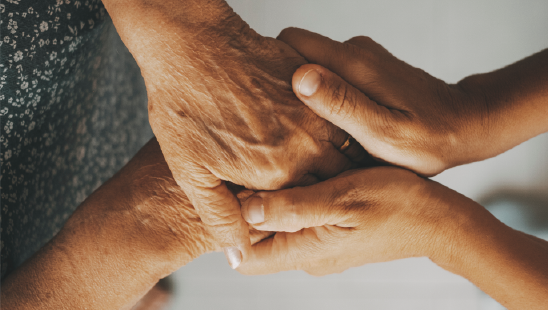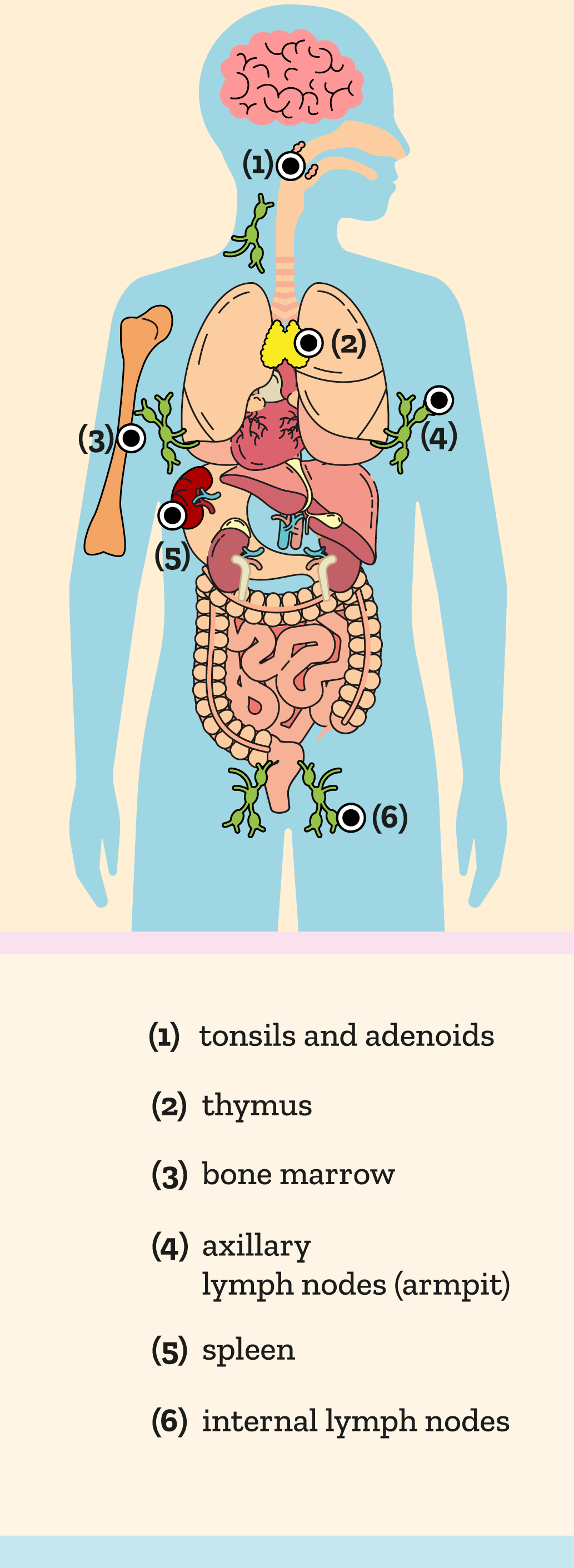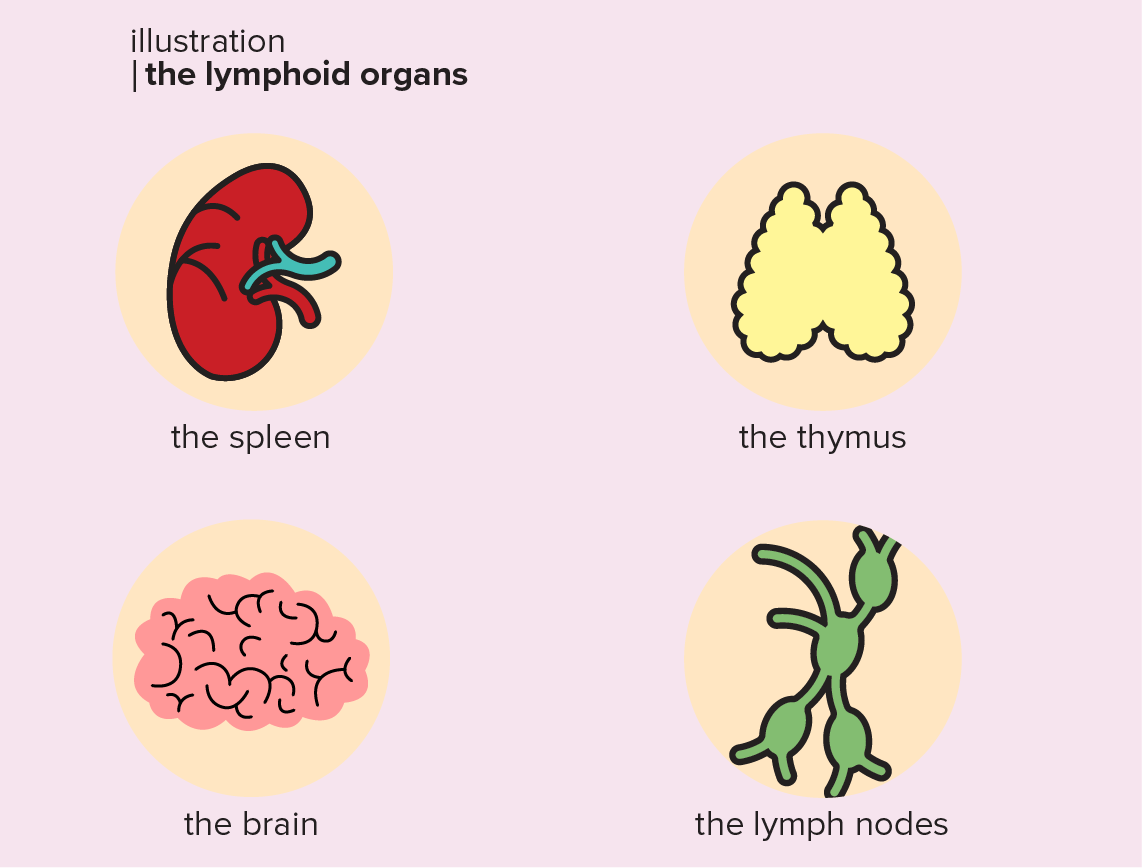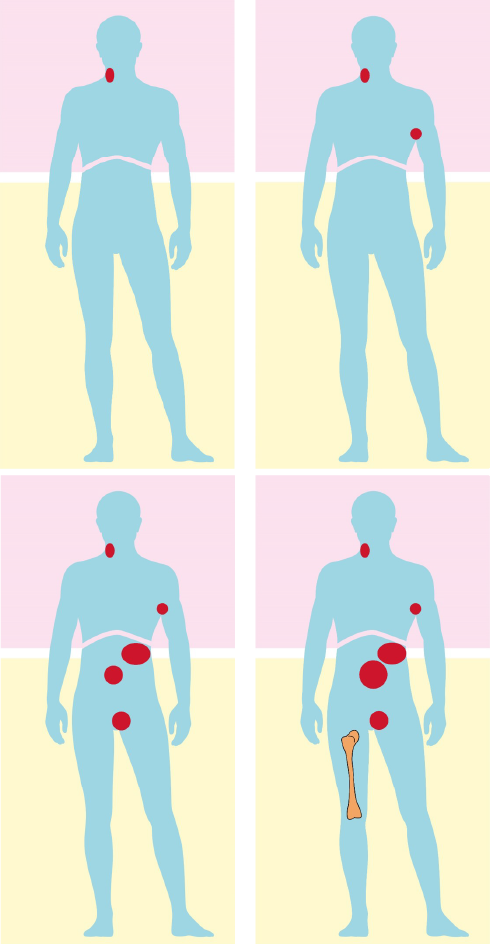This platform is specially for anyone who has been affected in any way by lymphoma or anyone who wants to learn more about how CAR T treatment works.
We have designed it to help people who have been affected by lymphoma, whether they are patients themselves, or looking for information about a treatment such as CAR T, or simply wanting to support their loved ones.
Facing a diagnosis of lymphoma is tough ordeal and raises numerous questions and concerns for which it can be difficult to find reliable information. This platform aims to give you all the keys for understanding lymphoma better and for guiding you in your discussions with health professionals about CAR T.
Homepage - An introduction to lymphoma and an overview of the other sections of the website.

Learn to recognise the signs and symptoms of lymphoma.

Discover the various options for treating lymphoma.

An in-depth look at the innovative CAR T lymphoma treatment.

Useful resources for patients and their friends/families.
What is lymphoma?
Lymphoma is a cancer of the lymphatic system that develops in certain white blood cells known as lymphocytes. These then accumulate as a tumour masse (the actual lymphoma), principally in the lymph nodes. The lymphocytes become cancerous and proliferate out of control.
This is why the term lymph node cancer is sometimes used.

The lymphatic system is an active component of our immune defence systems. It comprises various organs:
There are various types of lymphoma, as you can see, with numerous subtypes (more than eighty!), which makes it difficult to understand the disease. It is important to understand your diagnosis fully and to ask your doctor whatever questions you may have about the subgroup and the grade of the disease.
The large number of subcategories of lymphoma are generally classified into two main categories:
As the term "non-Hodgkin lymphoma" includes over eighty different subtypes of lymphoma, knowing the exact diagnosed subcategory and disease progression, is crucial for a better understanding of the diagnosis and the options for treatment. Talk about it with your haematologist.
Some of the categories of non-Hodgkin lymphoma are listed below:
DLBCL
Diffuse large B-cell lymphoma (DLBCL) is the commonest subtype of non-Hodgkin lymphoma, accounting for about 30% of cases. It is an aggressive (rapidly growing) lymphoma and about 30-40% of patients do not respond to the initial treatment (the disease is then said to be "refractory") or have a relapse after a period of remission.
*Relapsed or Refractory Diffuse Large B-Cell Lymphoma: Dazed and Confused. Oncology (Williston Park). 2022 Jun 10;36(6):366-375.PMBCL
Primary mediastinal B-cell lymphomas.
Follicular lymphoma
Develops from cancerous B-lymphocytes that cluster together in rounded groups (follicles) in the lymph nodes or other affected tissues, hence the adjective "follicular". This is a type of indolent lymphoma.
Marginal zone lymphoma
Is a type B lymphoma that in turn has three subtypes. It is also a type of indolent lymphoma.
Mantle cell lymphoma
Affects the B-lymphocytes that are present in a specific zone of the lymph node, known as the "mantle zone". These are more commonly aggressive.
Burkitt lymphoma
Develops in B-lymphocytes and is generally aggressive.
Peripheral T-cell lymphoma
Develops at the expense of T-lymphocytes; it is the commonest type of type T non-Hodgkin lymphoma.
Where can lymphoma develop?
Similarly to the circulatory system, the lymphatic system plays a crucial role in the immune system. It consists of vessels of various sizes through which the lymphatic fluid circulates, carrying waste products plus the immune cells. Lymphocytes – a type of white blood cell produced in the lymphatic tissue – are an essential part of our defences against infections.
Given that white blood cells circulate throughout the body in the bloodstream and lymph, malignant or cancerous cells can get everywhere in the organism, allowing lymphomas to develop in almost any part of the body.
Lymphomas can therefore be located in:

Lymph nodes: Lymphoma often develops in lymph nodes throughout the body, manifesting as e.g. swollen nodes in the neck.
The skin: Cutaneous lymphoma affects the skin and often presents as a rash.
The brain: A rare type of lymphoma can affect the brain.
Other organs: Lymphoma can also appear in the liver, the spleen, the bone marrow, the stomach, the intestines, the thyroid gland and other organs.
It is important to be aware that the lymphoma can develop not only in the lymph nodes but also in other tissues and organs. The dissemination of malignant cells throughout the organism makes this a complex disease, underlining the importance of monitoring the various symptoms and affected zones.
Survival in lymphoma
Is lymphoma fatal?
The answer depends on the type of lymphoma and the stage of the disease. Life expectancy with lymphoma also varies with the treatment and the patient’s individual response.

Survival statistics
In Belgium
The five-year survival averages for 72% Non-Hodgkin lymphoma.1 However, this varies greatly depending the subtype of lymphoma.

For DLBLC, the most common of the non-Hodgkin
lymphomas, a 59% survival rate was noted.2

For follicular lymphoma, which is primarily indolent,
the survival rate increases to 89%2 (relative survival
after 5 years).

Factors influencing survival
Several factors affect survival rates for lymphoma patients, in particular:
Management of advanced phases
In the case of terminal-stage lymphoma, palliative care is often suggested in order to improve the patient’s quality of life. This care includes pain management, emotional support and treatment of the associated symptoms. This type of care is also provided for people who are unable to tolerate intensive therapy.
BE-UNB-1304